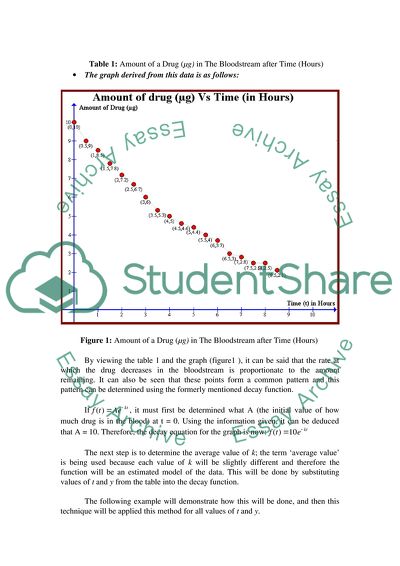Modelling the Amount of a Drug in the Bloodstream Lab Report Example | Topics and Well Written Essays - 2000 words. https://studentshare.org/mathematics/1710414-maths-standard-portfolio
Modelling the Amount of a Drug in the Bloodstream Lab Report Example | Topics and Well Written Essays - 2000 Words. https://studentshare.org/mathematics/1710414-maths-standard-portfolio.


